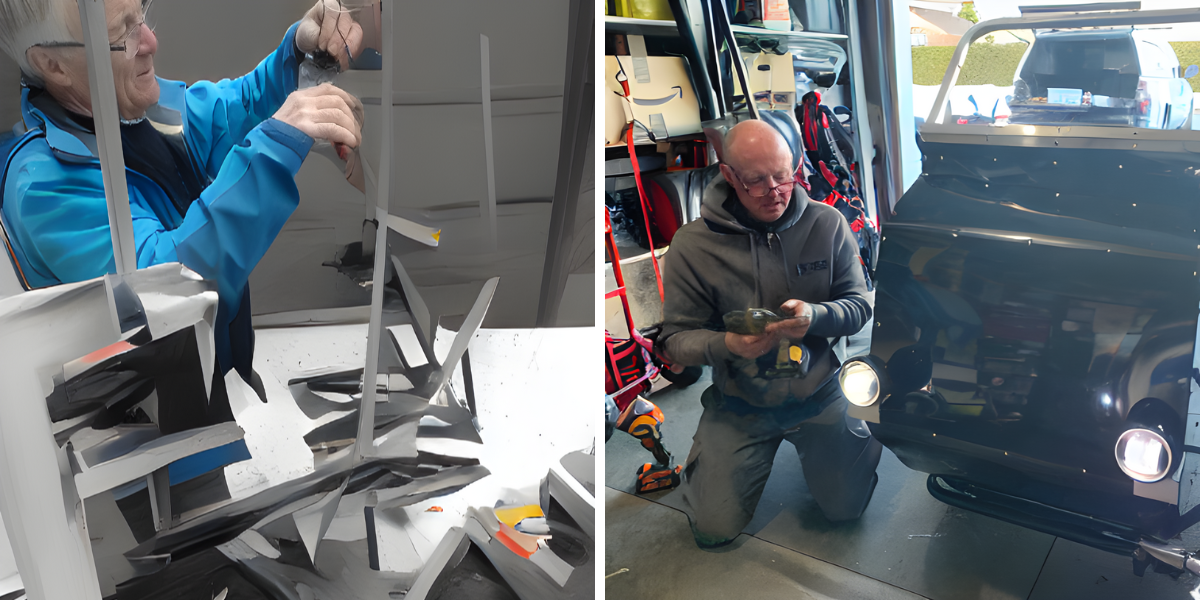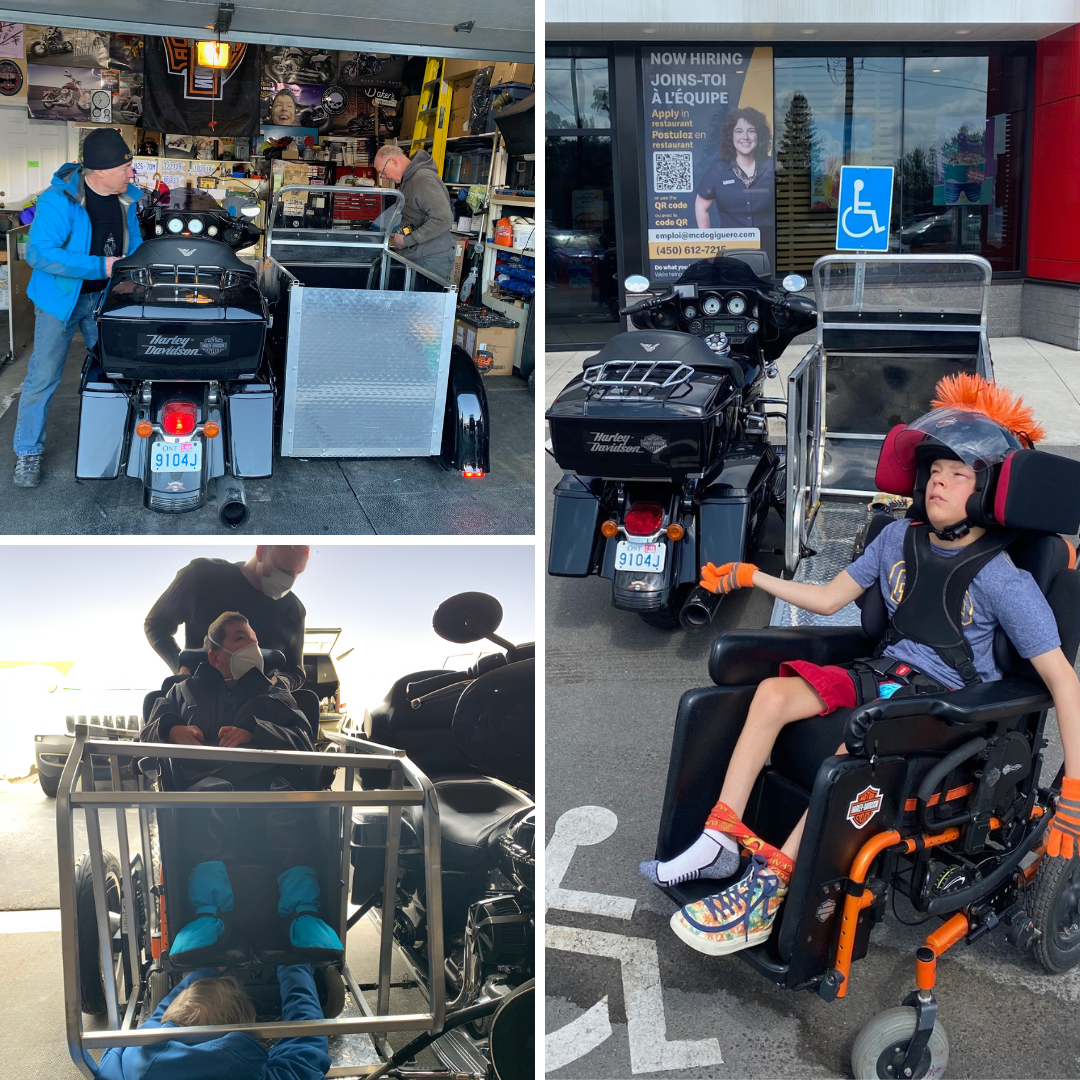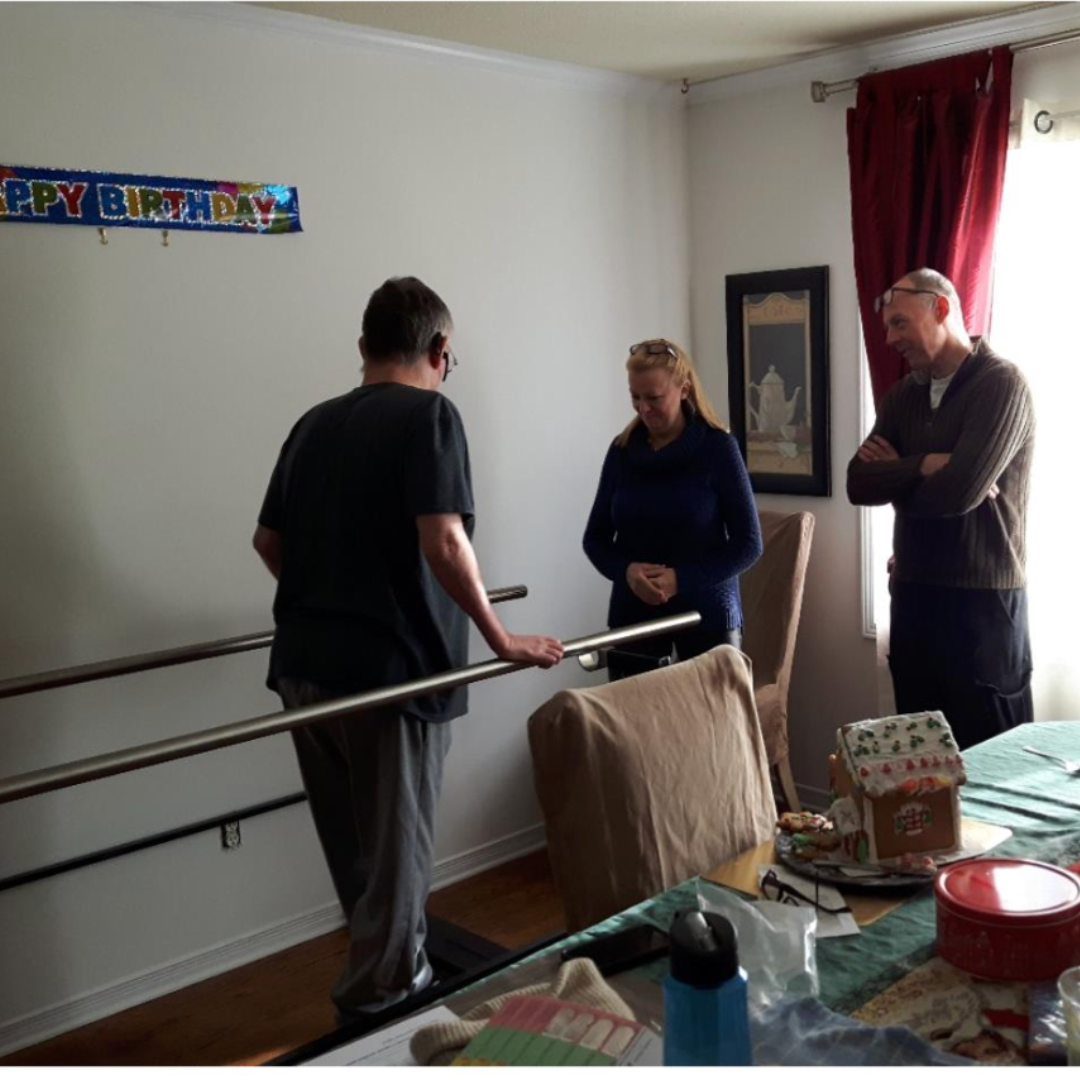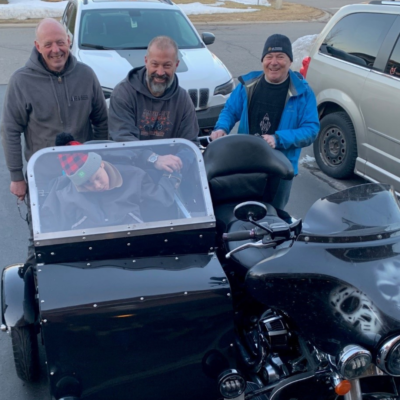In this issue of the vHub newsletter, we are privileged to spotlight the exceptional contributions of Jim Larocque and Russ Jones, two of Tetra Society’s 243 active volunteers. Both Jim and Russ are known for their exceptional ingenuity and skill creating products and equipment that empower individuals with disabilities to live, work, and play to the fullest.
Jim and Russ began their Tetra volunteering journey five years ago in Ottawa, and since then, their impact has been both consequential and uplifting. Jim Larocque first heard of Tetra Society five years ago when his younger brother interviewed Tetra volunteer Scott Bulbrook and the organization’s local chapter coordinator, Paul Marriage on a radio show that Jim’s brother ran out of Carleton University.
Russ has seen within his own family how being physically disabled can affect one’s livelihood. His sister’s son is paraplegic, after having been diagnosed with transverse myelitis. Russ was thereby motivated to channel his technical skills to solve problems for people with disabilities. For Russ, the challenges his nephew faces are one of the driving forces behind his work: “Every day you’ve got things in your face you’ve got to deal with… that definitely influences.”

Jim says it doesn’t take much to make a difference in people’s lives. He recalls his first project, helping a family modify a trainer their son used for playing on the Capital Condors hockey team, “When I was shopping around to get bits and pieces for the project, once I told them what I was doing, the number of people that would step forward say ‘I’m not going to charge you for that. You can just use that if it’s not a big amount of material,’ they were very willing to help.”
Jim and Russ often find themselves working together on projects. One such project was a wheelchair-adapted sidecar for a motorbike, a unique and significant project from their time as Tetra volunteers. The individuals who came to them with the request were the parents of a 14-year-old who uses a wheelchair. He often enjoyed riding with the family on their motorbike in the sidecar. The fit was far from comfortable for him, however: “[their son] didn’t like this very much because he was out of his… wheelchair, and; he was sort of crammed into this sort of tube every time he had to get on and off the motorcycle,” says Russ.

With the request for assistance made by the parents, Jim and Russ began drafting their design over the next four or five months, making mock-ups from cardboard and wood to get a better idea of what was needed and to finalize their design. Russ explained that he and Jim would regularly visit the family, who lived outside Ottawa, to get their input, “Each time we went over there, we showed them a bit more and a bit more, and then we tried mounting it with the motorcycle and then finally in April, we took everything over there at that time and spent like half a day there getting everything working properly.”
Another time, Russ was asked by the Children’s Hospital of Eastern Ontario (CHEO) to look at a specialized chair used as part of an X-ray machine. The hospital said the X-ray machine could only take photos from one side of the chair. Recalling the hospital’s challenges, “I took that back to my shop, I cut a few pieces and welded a few… on to it, and handed it back to them the next day. And they were just floored. They were like, ‘That’s all it took, and we’ve been living like this for 20 years.’” He concludes that “you throw in someone who’s got a bit of engineering background, a project, and you can come up with something that can be life-changing for the people who… need it.”
For Jim, one of the most significant challenges he’s seen as part of his experience as a volunteer is how expensive it is for individuals and families to afford this equipment for their loved ones. Recalling his time developing the sidecar, the parents “approached the company they had their current sidecar from, and that company gave them a bigger quote. It’s something like $20,000 to be able to make something like this for them,” Jim said.

It doesn’t take much for Jim and Russ to change someone’s life. Reflecting on the families he’s worked with and a conversation with a volunteer for the Canadian Association of Disabled Skiers, Jim notes, “‘[The volunteer said] I joined to help the skiers, but I didn’t know they were going to help me…’ And I think a lot of the kids, a lot of the families that we worked with; you just get this thankfulness coming back; that they’re really appreciative of what you do.”
In addition to the projects already described, Jim and Russ worked on numerous complex and time-consuming projects over the years of their volunteering, including:
- A wheelchair swing
- A collapsible parallel bars
- Linking two bikes in tandem
- Adapting a recumbent bike
These projects required hundreds of hours of designing, creating, machining, welding and testing. Despite the intricate challenges each project presented, both Jim and Russ approached them with unwavering passion and commitment.

As we celebrate the remarkable work of Jim and Russ, we are reminded that their stories are representative of the broader impact our Tetra community can achieve. As we approach the end of the year, let us carry forward the spirit of collaboration, gratitude, and determination into the coming year. The support, dedication, and generosity of all our volunteers remain the driving force behind our shared successes.
Wishing you all a joyous holiday season and a New Year filled with hope, compassion and new possibilities.
